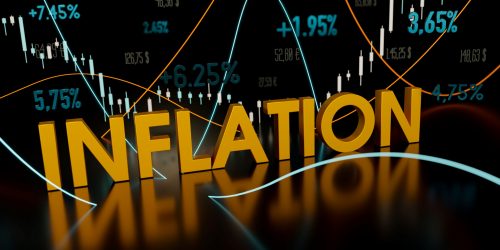Our 2023 Market Prediction can be summed up in two words: More Volatility!
You didn’t really think we were going to give a numerical market prediction, did you?
2022 was a volatile year for the bond and stock markets, with both indexes incurring double-digit losses. It was the first time the stock and bond markets fell that much in the same calendar year in over forty years.
Much of the loss earlier in the year was due to the anticipation that the Federal Reserve would raise interest rates quicker and higher than initially expected. This came to fruition with the Fed raising rates seven times which took the Federal funds rate from .25% to 4.25% at the end of December.
Economic news was quite promising during much of 2022, with unemployment staying at or near historical levels and companies continuing to announce strong earnings. These results would normally result in higher stock market performance. Yet in 2022, just the opposite occurred. The continued good economic news just resulted in more aggressive rate hikes. The thinking amongst investors was that as long as the economy stayed strong, inflation would remain high, and the Fed would continue to raise rates. The higher the Fed funds rate, the greater likelihood of a slowing economy and, ultimately, a recession resulting in lower stock prices.
The recent lower inflation numbers seemed to validate the Federal Reserve’s moves last year. Suddenly, however, bad economic news is beginning to appear. Announcements of layoffs at Microsoft, Amazon, Goldman Sachs, and Google have resulted in stock investors believing that the first stage of a recession may be approaching. Market volatility has picked up as five of the first thirteen trading days have seen market moves of 1% or more.
Where will the 2023 Volatility Likely Come From?
Volatility in 2023 is likely to come from three different places:
Rate Hikes
The Federal Reserve has signaled they likely will continue to raise rates, targeting a goal north of 5% and remaining there for the rest of 2023. Stock markets will be volatile to the downside as long as the Fed continues to raise rates or hold rates above 5% while companies continue to announce layoffs or report missed earnings. Stock markets will be volatile to the upside each time good economic news is reported, which will be interpreted as the economy withstanding higher rates.
Government Spending
The U.S. election this past November resulted in a small majority for the Republicans in the House of Representatives. The majority immediately showed signs of fragility with the inability to elect the Speaker of the House without significant concessions being made to the group opposing Kevin McCarthy.
This sets up for quite a stalemate when it comes to issues such as current spending as well as the next Budget. For now, the focus is on the need to raise the debt ceiling to allow the government to continue to borrow money to pay its bills, which includes interest payments on its debt and social security payments to recipients.
This is not a new issue. Most of the time, the debt ceiling is raised without much fuss. But that may be different this time. Already lines in the sand are being drawn. And while no one believes that Congress will ultimately let the U.S. default on its payment obligations, there is concern that only at the last possible moment will a deal be made to raise the debt ceiling. In the meantime, media outlets have already begun the ‘chicken little sky is falling’ articles to promote fear that a default will occur. All of that will likely create more stock market volatility.
The Unknown
The third place which could be a source of market volatility is something that we are not aware of as of now. Looking back over the years, the unexpected often occurs, throwing markets for a loop. Examples of this are COVID-19, the Great Financial Crisis, and 9/11. None of these events were anticipated even a few short months before occurring.
How to Deal with Volatility
So what should you do (or not do) given the likelihood of increased volatility in the markets this year?
The good news is that if you are properly diversified amongst many different types of investments in both the stock market and bond market, you are already protected against severe harm to your portfolio.
If you need to withdraw money from your portfolio for living expenses, it would be helpful to have already set aside those needs in investments such as cash, CDs, or even an individual Treasury bond. If you have not already done this, you should do so. Not having to withdraw funds from the stock market when it is going down is the best defense against running out of money.
Stock market volatility also presents opportunities to save income taxes. When an investment in a taxable brokerage account declines, you can lower your taxes by selling that investment if held at a loss. The loss can then be used to offset gains you may have later in the year or in future years when the markets have recovered. Care should be taken when doing this, as you cannot repurchase the same investment you sold until 31 days after the sale. Doing so would run afoul of the IRS wash sales rules, which would nullify the loss. You may not want to be out of the stock market for 31 days, so you can buy a similar investment to the one you sold (similar is fine; substantially identical is not okay).
Finally, perspective is essential when dealing with volatility. There has to be volatility for the ability to earn decent returns on those investments. Cash is the least volatile asset you can own, but the returns on cash (net of inflation) are the lowest and often do not even keep pace with inflation.
















